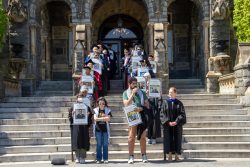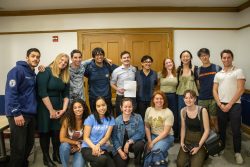On Nov. 13, D.C. Schools Chancellor Kaya Henderson announced a plan to shut down 20 schools in 19 buildings and six wards before the beginning of the next academic year. According to Henderson, some school districts have far more facilities than they need.
“Our buildings are wildly under-enrolled, our resources are stretched too thin and we’re not providing the complement of academic supports that our students and families deserve,” Henderson said in her announcement of the plan.
The relocation of up to 3,000 primary school students is expected to increase average enrollment by 12 percent, achieving an average facility utilization of 84 percent in each elementary school building.
Several groups, including parents, teachers, and volunteers, have shown concern on the impact this consolidation will have beyond the classroom.
“If you are simply shifting numbers, for the sake of shifting numbers without taking into consideration the way that you are literally uprooting communities by taking away a school where the community convenes, I think it’s completely irrational,” said DC Reads coordinator Elisa Manrique (COL ’14).
Currently, Georgetown students taking part in the DC Reads program, among other elementary schools, tutor at Davis, Smothers, and Kenilworth—three of the 20 schools that are projected to be shut down.
“These are all schools that we’ve built extremely close relationships with,” said Manrique. “We are not entirely understanding why some of the schools are being proposed for shutdown.”
One of the main concerns about the proposed plan is whether or not the consolidation of schools will improve the quality of the education offered to students.
“We looked at the proficiency levels of the schools that are closing compared to the proficiency levels of the feeder schools, and sometimes it just doesn’t make sense,” said Cat Skolnicki (COL ’13), also a coordinator for DC Reads.
“The students from Davis elementary, for instance, are going to be moved to C.W. Harris, where proficiency scores are at 15 percent, compared to a 38 percent proficiency at Davis,” Skolnicki said.
Another issue in the forefront of the dispute is the cultural shock involved in moving students from a familiar school into a new environment.
“Especially for schools like Kenilworth elementary, sending schools to Houston [Elementary] is going to be a very abrupt cultural shift,” Manrique said. “The communities, despite the fact that they are a five to 10- minute drive away, do not interact very much and have fairly different cultures.”
“There are historical rivalries between those two communities,” Skolnicki said. “Kids’ parents actually tell them, ‘don’t cross the train tracks,’ because in many cases they get beat up because of that rivalry.”
If the proposed changes were to occur, Manrique says the DC Reads program would have to shift its schedule and consider decreasing the number of students that they can hire. “If the school can’t physically have double the amount of tutors, then we can’t run that program as effectively,” she said.
Director of the DC Reads program Nathanial Roloff agrees. “Any new relationship is going to create challenges, because it requires a whole other setup,” he said. “We’re going to have to move site and move things around, so relationship building can be difficult.”
This is not the first time a DCPS policy has forced DC Reads to adapt its programming.
Earlier this year, DCPS cut the Out-of-School Time coordinator position, decreasing the number of coordinators from one in every school to one oversight coordinator for a group of three to four schools.
“Our program has been impacted by the significant budget cuts to the Office of the Out of School Time,” said Helen Conway (COL ’15), DC Reads tutor and Chair of the Advocacy Committee.
“Many of the wonderful OST coordinators, with whom we’ve developed great relationships, have left DCPS. New programs, such as The Fishing School, have offered their services to our schools and in some ways, we just can’t compete. We, as college students, can’t be at schools from 3 to 7 p.m. It’s just not possible.”
Even though there have been no concrete plans announced regarding what to do with abandoned buildings, there has been talk about replacing them with charter schools or community centers. But some feel that traditional public schools should be prioritized.
“Being the nation’s capital, we should have a general concern for the public services that we allow our communities, and if public schools are not one of our priorities, then there’s something wrong with our priorities,” said Manrique.
Dwayne Williams, consultant for the Urban Teaching Center and the Center for Inspiring Teaching, also showed concerned about the potential increase in the number of charter schools.
“While competition is certainly great and important, there are a lot of questions about whether closing more traditional public schools and opening more charter schools is the best way to ensure that all students have consistently excellent education,” Williams said.
Until a final decision is made on Henderson’s plan, DC Reads members are finding ways to advocate against the measure.
“What we are trying to do right now is respond as advocates for our kids, we’re trying to do what we can to salvage what we can,” said Skolnicki. “We’re going to write to the Mayor and to Kaya [Henderson], and to testify for our families and our communities, before we think about what happens when they close.”
Mayor Vincent Gray will make the final decision on Henderson’s proposal in January, but until then DC Schools will continue its operations.
“We are committed to our schools, until we are no longer committed to our schools,” Roloff said. “When those schools will be officially closing, then we’ll start looking to moving our staff to other places.”




